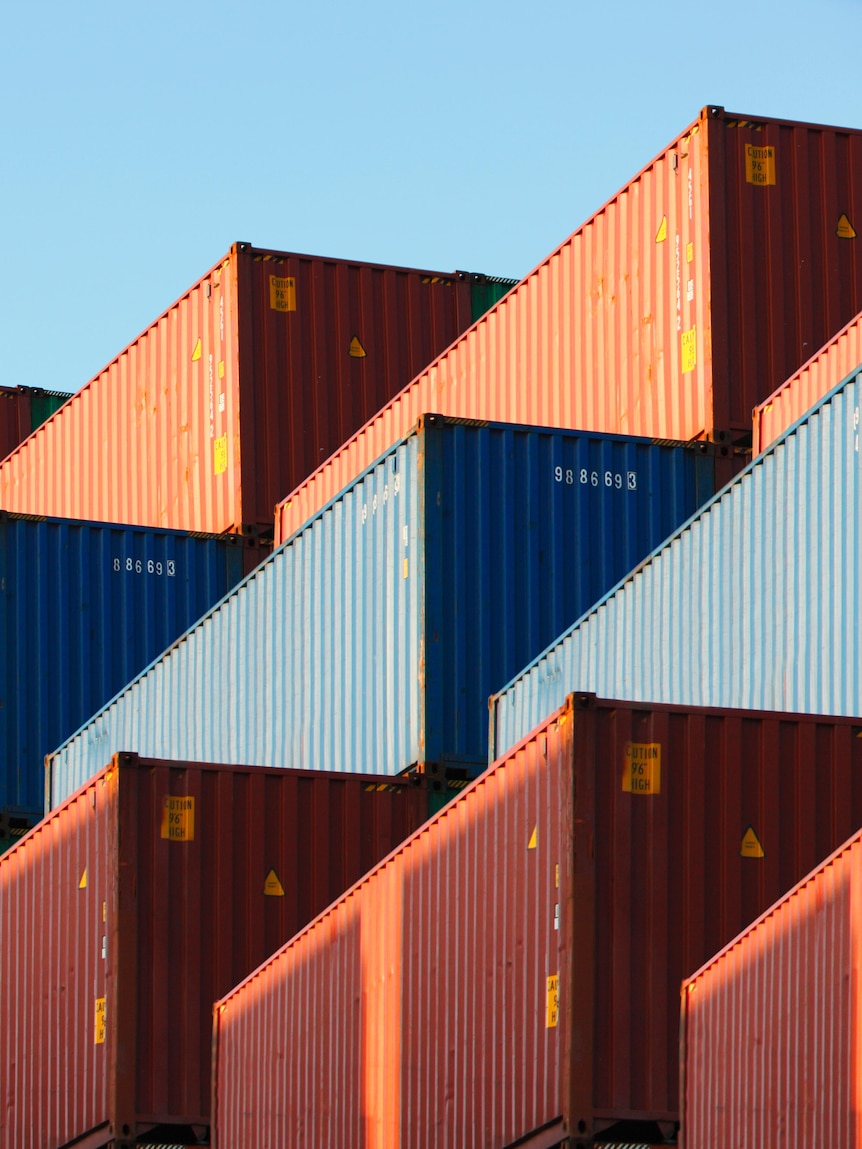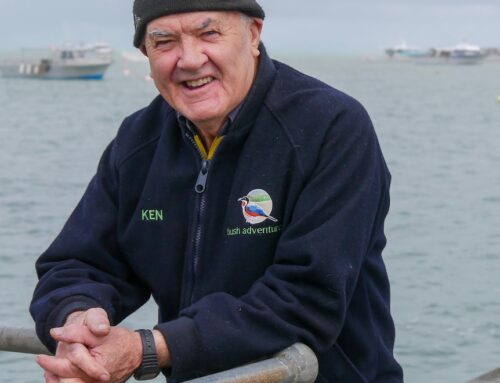If you were to rank humanity’s most consequential inventions, chances are the shipping container wouldn’t rate a mention.
This bland metallic box could never compete with the likes of the wheel, Gutenberg’s printing press or the internet, right?
Wrong, according to Anna Nagurney, an operations management expert at the University of Massachusetts.
“Without this brilliant invention … we wouldn’t have global supply chains, we wouldn’t have global trade at the level that we have now,” Professor Nagurney tells ABC RN’s Late Night Live.
And amid an international supply chain crisis, with a growing backlog of delayed orders and labour shortages across networks, the importance of these bland metallic boxes has never been more apparent.
Almost every product travels in a shipping container
In most Australian homes and just about any other venue you can think of, the majority of the items there likely arrived via a shipping container.
This probably includes the clothes you’re wearing, the device this article is appearing on and the coffee you may have just drunk.
“About 90 per cent of the world’s goods are transported via ships,” Professor Nagurney says, and most of this is inside shipping containers.
She says around US$14 trillion ($18.8 trillion) worth of goods cross the seas each year inside one of these units.
But COVID-19 has upended the global networks that supply most of what we consume and own.
The struggle to find shipping containers
Vinh Thai, a shipping and logistics expert at RMIT University and the founder of the Australian Maritime Logistics Research Network, says the trouble began early last year.
“[Initially], national lockdowns and restrictions saw demand for goods actually reduce a lot … So ships would skip a port in a route or sometimes skip the whole voyage,” Professor Thai says.
He says this led to “a situation where many empty containers were just left around ports and not picked up.”
This meant countless units were in the wrong place at the wrong time.
And then, Professor Nagurney says, demand for goods spiked in many countries.
“As the pandemic evolved, consumers wanted to buy all sorts of goods, like exercise equipment, office equipment, laptops, new furniture supplies for their homes,” she says.
“That created a huge demand for all sorts of different products as well as raw materials.”
Add to this other recent issues, like labour shortages at key points, increasing port congestion and the container ship Ever Given getting stuck in the Suez Canal.
Professor Nagurney says these “major disruptions” have thrown the networks into disarray and meant “a lot of retailers are now struggling to get shipping containers.”
And she says this scarcity is increasing costs.
“In 2019, a 40-foot container would cost typically about US$2,000 [$2,700] to ship from Asia to the US. [In late September] if it was time sensitive, it could have cost as much as US$25,000 [$33,700],” she says.
“It increased more than tenfold in two years. So that’s adding costs to consumers.”
Professor Thai says the effects could become more pronounced in the weeks and months ahead.
“Consumers like you and me will have to wait a longer time for goods to be loaded on the shelf at supermarkets and I expect some prices will increase.”
And it’s not only affecting Australian consumers, with Australian exporters also having difficulties securing containers — making their products more expensive and less competitive.
Professor Nagurney says China — where most shipping containers are built — has increased production of these boxes but current demand and snarls in the systems are too overwhelming.
Christmas delays and costs
Professor Nagurney says the situation will likely get worse as the Christmas season approaches.
“For example, a lot of Christmas decorations are actually produced in Asia. But some of the exporters are in Europe,” she says.
“And many retailers were expecting to get the supplies around June, but many of the goods haven’t arrived yet. We have months of delays in terms of getting goods.”
Professor Thai says big delays and more expensive consumer goods in Australia are “a big possibility” in the lead up to Christmas.
“[For those who are able to], it may mean accepting an increase in terms of price, with the perception that perhaps this is just a one-off occasion,” he says.
So Professor Nagurney has some advice as we reach the end of the year.
“I think it’s really important, if you want to do Christmas shopping, you should either be planning locally or maybe making your own Christmas decorations and Christmas gifts.”
900 million cans of baked beans
Shipping container aficionados say Malcolm McLean is one of the 20th century’s most underrated people.
Before Mr McLean, most global trade was conducted by manually loading and unloading all different types of storage units on ships, an inefficient and expensive process.
Then in 1956, the American truck driver turned businessman had a simple idea — to put cargo in standardised big boxes and mechanise the process where possible.
Professor Nagurney says that year, manually loading a ship cost around US$6 ($8) per tonne, before the standardised container cut that to just US16 cents (21 cents).
“It really revolutionised global trade and global supply chains … because the cost was going down,” she says.
Professor Nagurney says the design of these containers — almost unchanged since the 1950s — means some ships are able to carry up to 24,000 individual units.
“So [bigger ships] can hold 156 million pairs of shoes, 300 million tablet computers, or, one of my favourite statistics, 900 million cans of baked beans … It’s mind boggling.”
Mr McLean’s efforts saw him named the International Maritime Hall of Fame’s Man of the Century in 2000 and when he died in 2001, his obituary in the Washington Post said his “deceptively simple idea transformed the world’s commerce and economy.”
And Professor Thai says there is one silver lining to the great shipping container shortage.
“Most people are unaware that a lot of things they are using in their everyday life need to be transported in containers,” he says.
“So I would say the one blessing in disguise is to highlight the importance of these behind-the-scenes mechanisms that make the whole world go.”
RN in your inbox
Get more stories that go beyond the news cycle with our weekly newsletter.
Posted , updated




